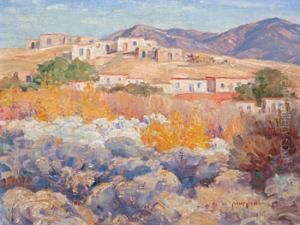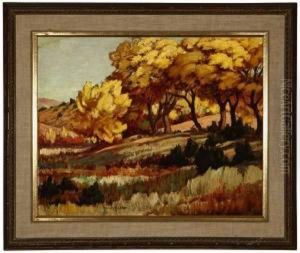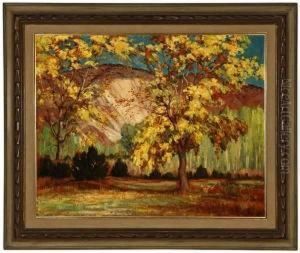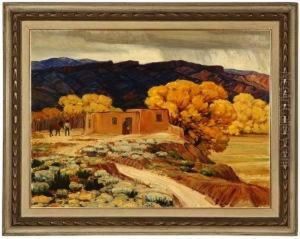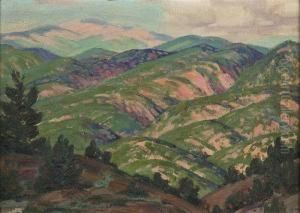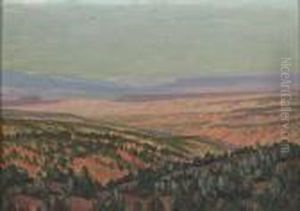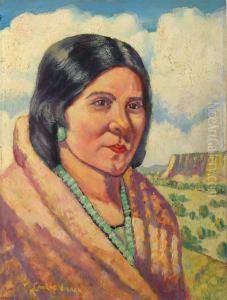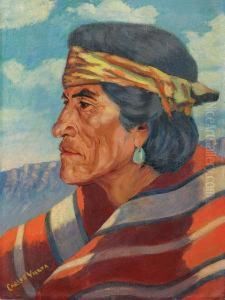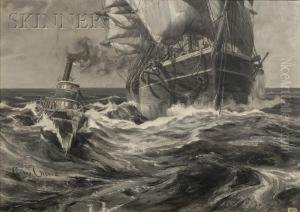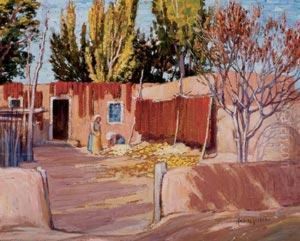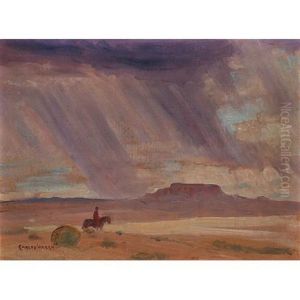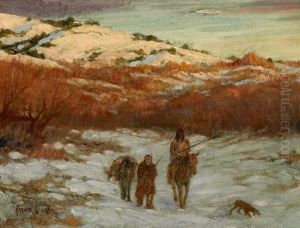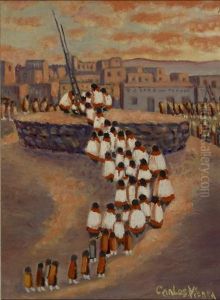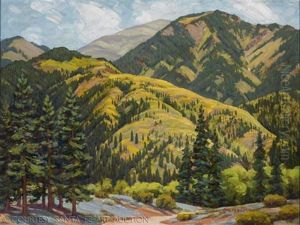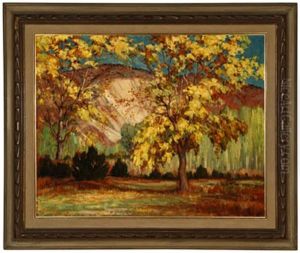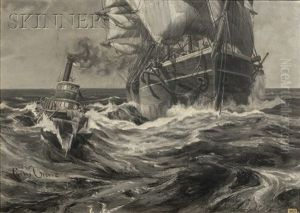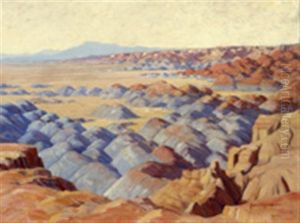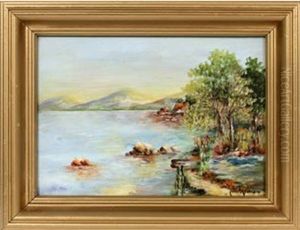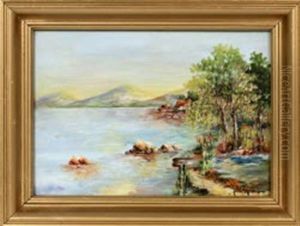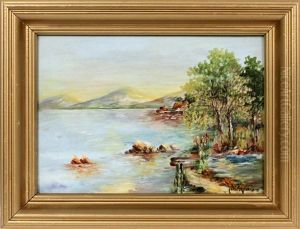Carlos Vierra Paintings
Carlos Vierra was an American painter, often recognized for his role in the early 20th-century art scene in Santa Fe, New Mexico. Born in 1876 in Moss Landing, California, Vierra showed an interest in art from a young age. He left California to study art in Paris, which was the epicenter of the art world at the time. After returning to the United States, Vierra moved to Santa Fe in 1904 due to health reasons — specifically, he was seeking a drier climate to alleviate his tuberculosis.
This relocation proved to be a turning point in his career. The landscapes and cultures of New Mexico deeply influenced his artistic vision. Vierra is credited with being one of the first artists to paint the Pueblo Indians and their way of life. He was particularly fascinated by the architecture of the pueblos and the vast, open landscapes of the Southwest. His work during this period helped to draw attention to the region and contributed to the establishment of Santa Fe as a notable center for American art.
In addition to his paintings, Carlos Vierra was also involved in preserving the local culture and architecture. He was one of the early advocates for the Santa Fe Style of architecture, which sought to preserve and incorporate traditional adobe construction methods and aesthetics. Vierra's efforts went beyond his artistic contributions; he was involved in civic activities aimed at preserving Santa Fe's historic character.
Throughout his career, Vierra's work was exhibited widely, and he gained recognition for his contribution to American art. He was a pivotal figure in the Santa Fe art colony and his legacy includes not only his paintings but also his influence on the architectural preservation and cultural life of the region. Carlos Vierra passed away in 1937, leaving behind a body of work that continues to be celebrated for its depiction of the Southwest and its impact on the cultural heritage of New Mexico.
